High Fidelity Cables CT-1 Enhanced Cables: The Revolution Will Not be Televised
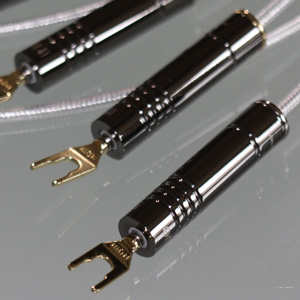
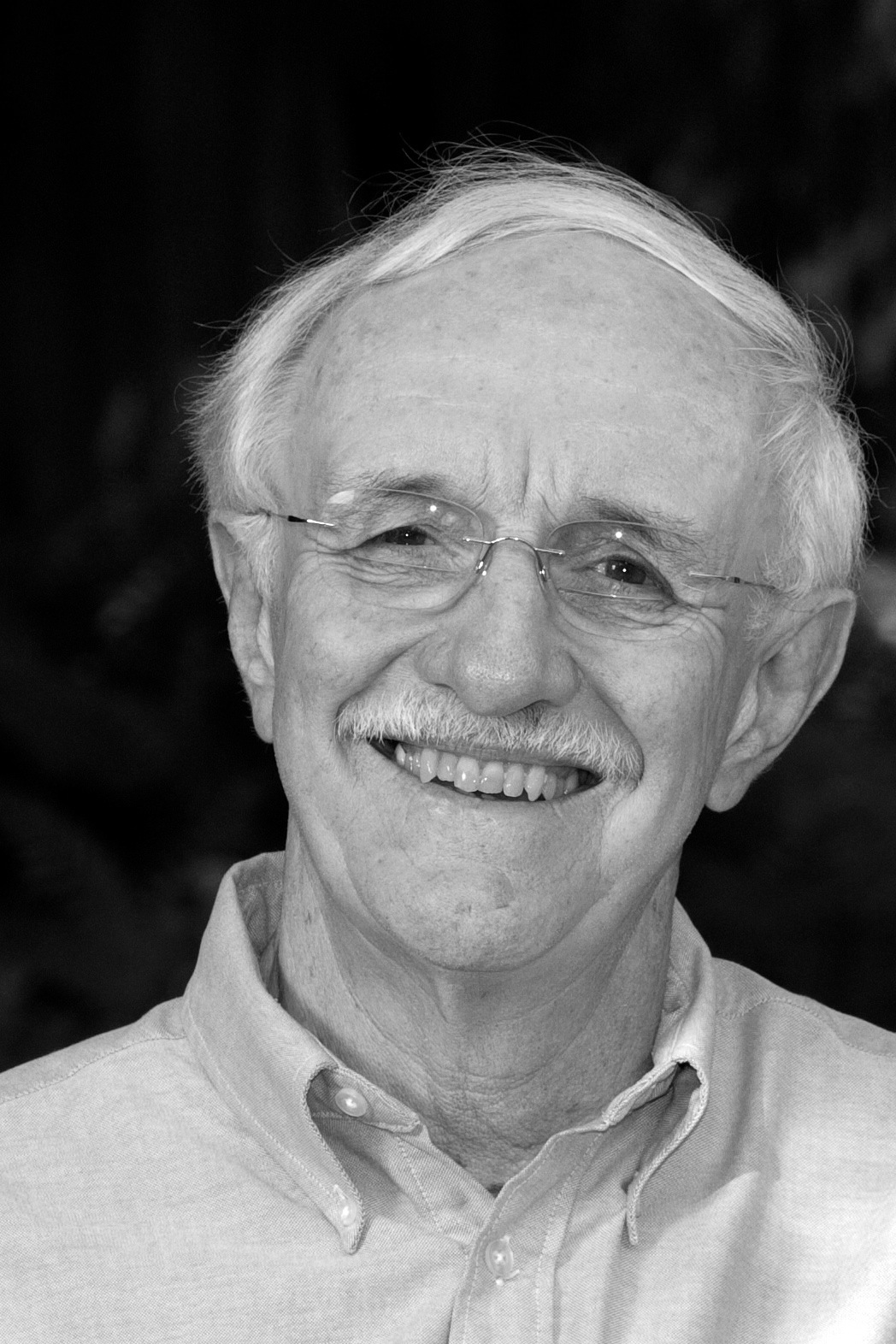 I have not been in a circumstance where I witnessed my own “revolutionary” product in high-end audio. Many, of course, claimed this was the case when Redbook compact discs were introduced, but we know what a disappointment this revolution has been when it came to its sound quality. Only now are we achieving quality music reproduction with digital. Perhaps even transistors were a false revolution. Perhaps many proclaim revolutions to hype their products. But recently, I’ve spent time with new cables that may actually deserve this kind of praise. They’re from a company that is, aptly enough, called High Fidelity Cables.
I have not been in a circumstance where I witnessed my own “revolutionary” product in high-end audio. Many, of course, claimed this was the case when Redbook compact discs were introduced, but we know what a disappointment this revolution has been when it came to its sound quality. Only now are we achieving quality music reproduction with digital. Perhaps even transistors were a false revolution. Perhaps many proclaim revolutions to hype their products. But recently, I’ve spent time with new cables that may actually deserve this kind of praise. They’re from a company that is, aptly enough, called High Fidelity Cables.
I had read several comments about these cables prior to the last Consumer Electronics Show, and had noticed that former Virtual Dynamics chief, Rick Schultz was the designer and held a patent on them. At CES I entered the AAudio Imports room only to discover that they were High Fidelity Cables’ US distributor. I spent some time talking with Rick about the new cables, and sat and gave them a listen. Of course, this was only about 24 hours after they were first played so they still needed a bit more time to break in. On the fabled last day of CES, when equipment has benefitted by over 70 hours of operation, I revisited the AAudio Imports room where the High Fidelity Cables were used throughout. This time I heard absolutely marvelous sound. I asked for review samples of the recently available CT-1 Enhanced line and Rick agreed.
Those samples came swiftly, included several pairs of interconnects, speaker wires, and one S/PDIF digital wire. I broke them in on Nordost and Blue Horizon break-in units and for more than three weeks. I must say that there was an amazing improvement to their unique sound. Frankly, each and every day they got better, usually with more low-level material suddenly becoming audible. How much better they will get remains to be heard, but now is the time to herald this revolution.
Rick Schultz holds a patent for a “Magnetically Enhanced Electrical Signal Conduction Apparatus and Methods,” or what he describes as “magnetic conduction.” There are both magnetic as well as conductive paths for the signal to pass through the cables. The magnetics make the signal with its full resolution flow more easily through the system. One sees a coaxial, silver colored cable with unusually long RCA plugs. Both ends have different pole magnets, which are part of the secret of the design. If you look closely, you will also notice that the center pin of the RCA has a bulge at the top, which assures a tight fit into the RCA jack. This is called a “PinLok.” The conductor itself uses a proprietary highly permeable alloy (mostly known as “Mu metal”) and is integral to the patent, as it is connects to the PinLoks at either end. There is no long linear crystal silver or gold wire in these cables.
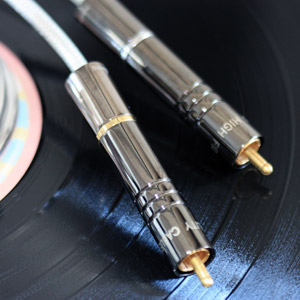 I saw three versions of these cables at CES but heard only two of them and in different suites. The three versions are the original CT-1s, raved about by The Absolute Sound’s Harry Pearson, the CT-1E (“E” stands for enhanced), which is the cable reviewed here, and the CT-1 Ultimate, which were heard in the Lansche suite at CES. I did get to compare the original CT-1s with the CT-1 Enhanced interconnects and speaker wires, which will be discussed below.
I saw three versions of these cables at CES but heard only two of them and in different suites. The three versions are the original CT-1s, raved about by The Absolute Sound’s Harry Pearson, the CT-1E (“E” stands for enhanced), which is the cable reviewed here, and the CT-1 Ultimate, which were heard in the Lansche suite at CES. I did get to compare the original CT-1s with the CT-1 Enhanced interconnects and speaker wires, which will be discussed below.
The CT-1s are currently available, as are the CT-1 Enhanced interconnects and the speaker wires will be available soon after this review is published. The CT-1 Ultimates are just now being made at the time of this review (those in the Lansche suite were the first ones created).
Many cables are directional and will sound different if used in one direction rather than the other. The High Fidelity speaker cables with gold trim (hot) are quite different from those with silver trim (return). Only the gold trim should be attached to the red binding posts, and only the silver trim should be attached to the black or “ground” binding posts. This has to do with the polarity of the magnets in the connectors. All that will be harmed in misconnecting the cables is your sound. I am told this is not a major concern with the interconnects. For optimal sound with both the interconnects and speaker wires, you need to heed the direction arrows going from the source to the load.
Listening Sessions
Fortunately, much of my Exemplar and BMC electronics afford the choice of single ended or balanced connection. There won’t be any balanced High Fidelity cables until later this year. With balanced XLR connectors, there is a major issue of getting all the parts needed for magnetic conduction achieved with three wires. Heretofore, I have been using balanced cabling. The first question was would the High Fidelity cabling used as interconnects, speaker wire, and S/PDif digital wire be disadvantaged being single-ended interconnects. I do not know how the High Fidelity balanced might compare, but the single-ended HF cables acquitted themselves quite well.
 As usual, I used selections from a broad range of albums with which I am familiar. Frank Sinatra and Count Basie Sinatra at the Sands [Mobile Fidelity MFSL 2-332] was where I was first impressed. It is a live recording with the Basie band present but doing little in the “One for My Baby and One More for the Road” cut. Sinatra is eerily present as is a single horn player off to our left, the audience, and the silent band. I have great difficulty saying where I am on this stage, but probably it is right where the microphones are. The Dave Brubeck Quartet Time Out Hybrid SACD [Columbia CS 65122, here in DSD on my music server] on “Take Five” has the most realistic soundstage I have ever heard for this recording and the piano and high hat were quite realistic. This was the first place where I experienced the added realism of the CT-1 Enhanced interconnects as the sax and bass also proved closer to the real sound of those instruments and had a precise location on the soundstage.
As usual, I used selections from a broad range of albums with which I am familiar. Frank Sinatra and Count Basie Sinatra at the Sands [Mobile Fidelity MFSL 2-332] was where I was first impressed. It is a live recording with the Basie band present but doing little in the “One for My Baby and One More for the Road” cut. Sinatra is eerily present as is a single horn player off to our left, the audience, and the silent band. I have great difficulty saying where I am on this stage, but probably it is right where the microphones are. The Dave Brubeck Quartet Time Out Hybrid SACD [Columbia CS 65122, here in DSD on my music server] on “Take Five” has the most realistic soundstage I have ever heard for this recording and the piano and high hat were quite realistic. This was the first place where I experienced the added realism of the CT-1 Enhanced interconnects as the sax and bass also proved closer to the real sound of those instruments and had a precise location on the soundstage.
Rob Wasserman’s Duets [MCA Audiophile MCA-42131], which always has impressed me with the sense of the recording venue, again is strikingly well captured. Finally, the K2 Sampler This Is K2HD Sound UD! [FIM K2 HD 078] Tchaikovsky “Swan Lake/ Duo” Ansermet and Orchestre de la Suisse Romande yields a realistic soundstage, great tumbrel accuracy of the instruments, and great extension at both ends of the frequency response. Only a hint of tape hiss was detrimental to full enjoyment.
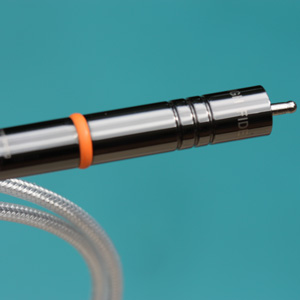
After I wrote this I remembered that I had added High Fidelity cables in a piecemeal manner. I decided to reinsert my reference cables throughout the system and gave them twelve hours to settle in. Frankly, I was somewhat surprised at how good they sounded. Then after about three hours of listening all of the above cuts plus many others, I put the High Fidelity CT-1 E back from the source to the speakers one at a time. The effect was cumulative with the HF RCA cable adding the characteristic clarity at the leading edge and sweetness in the top end. This was also true of the interconnects from the DAC to the linestage as a more defined sound stage immerged, as well as more defined and extended bass.
The next place were I used the CT-1E was RCA single ended from the line stage to the amps. This, I expected, might be a weak area for the CT-1E as the other interconnects were balanced. High Fidelity balanced interconnects will not be available until later this year. Actually, although the volume was down, the sound was even better.
Finally, I put the CT-1 speaker wire in. Yes, the Enhanced version was not available when I started the review. Both the CT-1s and later the CT-1Es were the biggest improvement in what I heard. The sound had a clarity and ease about it that seemed very real.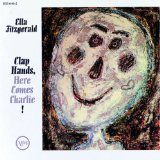
At one point I had to leave the room and left the music playing. While in the next room, I remember the old story that one can even tell whether a piano is the real thing or just a recording, even through a wall. I was suddenly struck that I was closer to this than I ever thought I would get. Ella Fitzgerald was singing in my listening room. This was Ella singing onClap Hands, Here Comes Charlie (a HD Tracks 192/24). Throughout the over 300 hours that I estimate having played these cables, they have continually improved. Initially, it was to have a full-range excellence, but then it became to hear more deeply into the music and to get more information out of the system.
After what seemed a long time, I was finally able to assess an entire CT-1 Enhanced system when the CT-1 Enhanced speaker wire. Much like my experience listening to the CT-1 interconnects and then the CT-1Enhanced, the CT-1 Enhanced speaker wires made me say I had to have them. The soundstage became just, well, vivid and real. Dave Brubeck’s “Take Five” had the drums, bass, Desmond’s alto sax, and Brubeck’s piano all became perfect in timbre and realism.
Yes, I know these are expensive cables, but they’re hardly the most expensive cables I’ve heard. Yes, you may not be as taken by them as I am, but if at all possible, you should give them a listen anyway. Yes, they take a long time to reach their full potential making any evaluation difficult. In fact, I doubt if I have heard their full potential yet. But here’s hoping I’m in for much more improvement. Personally, I know of no other way to get the realism in music reproduction I’m getting other than with these cables. I could not recommend them more highly.
![]()
![]()
Specification:
Interconnects: CT-1 Enhanced $2800 ($350/.5 m), standard $1600, and Ultimate $4900
Speaker Wires: CT-1 Enhanced $4200 ($700/.5 m), standard $2400, and Ultimate $7500
Digital Cable: CT-1 Enhanced $1400 ($175/.5 m), standard $800, and Ultimate $2450
Phono Cable: CT-1 Enhanced $2800 ($350/.5 m), standard $1600, and Ultimate $4900
Address:
High Fidelity Cables
3941 Legacy Drive
Suite 204, B-230
Plano, Texas 75023
USA
Website: www.highfidelitycables.com
Email: info@highfidelitycables.com
Telephone: +1-972-312-1902
norm luttbeg
norm luttbeg
![]()
Stereo Times Masthead
Publisher/Founder
Clement Perry
Editor
Dave Thomas
Senior Editors
Frank Alles, Mike Girardi, Russell Lichter, Terry London, Moreno Mitchell, Paul Szabady, Bill Wells, Mike Wright, and Stephen Yan,
Current Contributors
David Abramson, Tim Barrall, Dave Allison, Ron Cook, Lewis Dardick, John Hoffman, Dan Secula, Don Shaulis, Greg Simmons, Eric Teh, Greg Voth, Richard Willie, Ed Van Winkle, Rob Dockery, Richard Doron, and Daveed Turek
Site Management Clement Perry
Ad Designer: Martin Perry





Be the first to comment on: High Fidelity Cables CT-1 Enhanced Cables: The Revolution Will Not be Televised